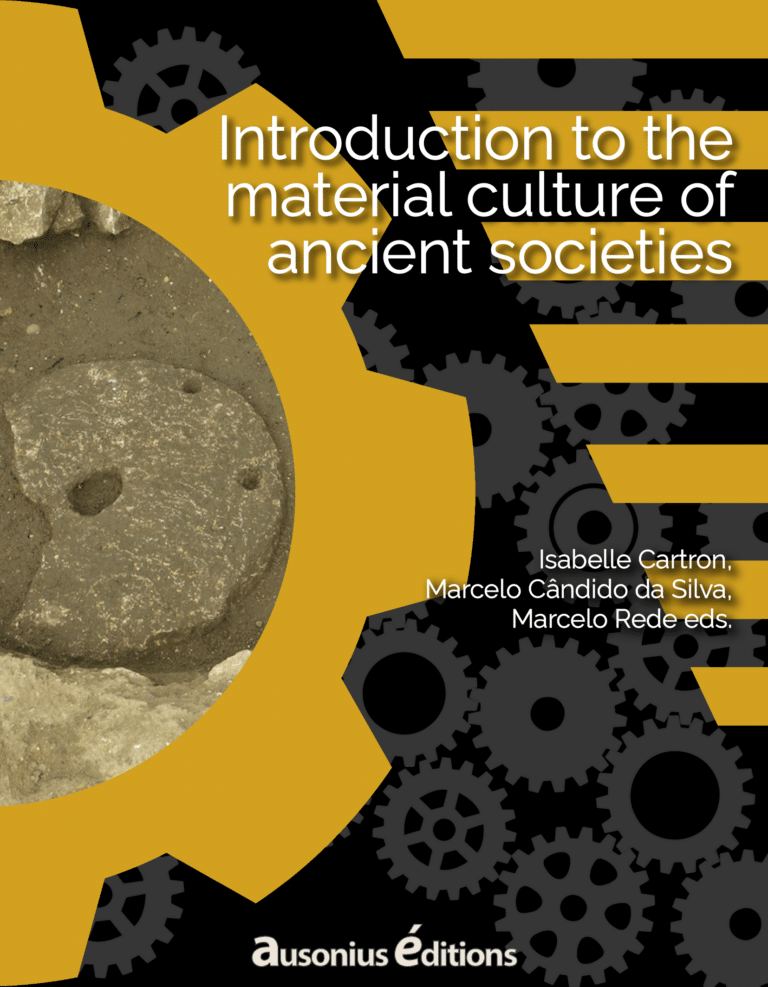The connection between settlement patterns, settlement networks and production systems are fundamental to ancient societies. This is crucial to the ability of archaeologists and historians to understand the ways in which ancient and medieval societies organized, managed, and consequently produced from their territories. The minimalist thesis insisted on the non-permanent nature of the buildings, proposing a loose, semi-itinerant settlement model with no fixed points or organization. Back in the Middle Ages, this idea has been challenged by archaeologists and later historians – and since mid-1990s – in areas as diverse as Normandy, Bavaria, and Tuscany. However, we have seen that the results depends on the region taken into account.
The North-Western Europe can be contrasted with Mediterranean Europe, in order to identify fault lines that would explain the transition between a centralization on the Mediterranean area to a system that is much more open to the northern seas (Atlantic, The English Channel, North Sea, Baltic).
From ancient to medieval economics
Gaul’s situation in the sixth century offers an interesting synthesis of our two models. It is important to keep in mind that the break-up of the imperial context into a small number of kingdoms has long-lasting economic and social repercussions between the fifth and seventh centuries. Describing this phenomenon as a recession would be inaccurate: it would be more appropriate to refer it as a gradual adaptation of agricultural and craft production of a smaller framework as in the kingdom or in the region. It is important to be aware of the end of the Roman Empire which led to a considerable easing of the tax burden, both for smallholders (whom were subject to levies on money and food) and for local notable (whom advanced the tax revenue to the central authorities). Consequently, one notices that farmers and stockbreeders opted for animal and plant species that were less productive but more resistant thanks to a gradual reduction in trade during the sixth century, also due to a decrease in demand and climatic cooling (the Late Antique Little Ice Age). This phenomenon is particularly evident in archeozoological studies, in which the average size of certain domestic animals (roosters, oxen) decreased between the fifth and the eighth centuries. If one compares this macroeconomic information with the demographic reduction, it is possible to have a better understanding on the human groups’ preference for settlements on light soil in Northern Gaul or Germania. The latter required less investment to cultivate. This choice may partly explain the non-permanent nature of the habitat, in order of two or three generations. It was also important to ensure that the farm was close to wooded areas because the soil was rapidly being depleted. The ease in which wood could be collected could be a standard for settlement. In this template, a single group could improve on the same land, which was large enough to allow the same village nucleus to move every seventy or one hundred years. Also, the reduction in the inhabited urban area is reflected in the archaeology seeming layers of “black earth”, indicating the presence of agropastoral activities or dwellings made of perishable materials (wood, earth and thatch) within the town walls themselves.
As far as the Mediterranean countryside is concerned, until recently the attention of researchers has been focused on the question about the future of the Roman villae. These were traditionally the residences of the elite and centers of exploitation integrated into regional and imperial trade circuits and networks. The villae’s network was maintained in the fifth century, at the time of the arrival of barbarian people, and then there was a gradual reduction in the area inhabited and a slow loss of this type of building between the sixth and the end of the seventh century. This was partly due to the reduction in the volume of the commerce. The villa was organized into two parts: the pars urbana, in which was included residential and persuasive functions (such as banqueting halls, baths, patios, gardens, etc.), and the pars rustica, that housed agricultural and craft buildings. The Late Antique and Medieval villae system seemed to operate largely on the principle of agricultural wage labor rather than the massive slavery of the early Empire. There are also significant regional differences to be considered. In Southern Gaul and Spain, those sites seem to have largely survived the arrival of the Goths and Franks, who formed small Roman groups, in general. Thereby in the seventh century, Bishop Didier of Cahors and leading families from the senatorial nobility were able to maintain the illusion of continuity with the Roman lifestyle. On the other hand, in Italy, the latitudinarian system disappeared between 550 and 560 under the blows of the Byzantine armies and the Lombards’ arrival. However, even when the residential functions of the villae are maintained, this result in a reduction of the surface area and very often these sites are gradually abandoned, such as the villa at Plassac in Gironde. It is interesting to observe that these sites seem to have retained their appeal through contemporaries’ point of view, who reused them to build prestigious tombs or churches, as in Mérida in south-west Spain. Settlement and production networks were rebuilt around rural churches and fortified sites in Lombard Tuscany and Visigothic Septimania, guaranteeing the stability and the identity of human groups. For example, in Castelseprio and Monfelice in Tuscany, or the Roc de Pampelune in Septimania. Some of those places called castra – or castrum in the singular form – in written sources, developed over the course of the 7th and 8th centuries, until they became real domanial centres or curtes – curtis in the singular form – in the Carolingian period. The second half of the eighth century and the ninth century were, indeed, marked by the development of the social elites’ hold over the rural population and over production in general, through the implementation of a new system of domanial rights.
Is there a strengthening of the new lord-ship model?
Indications of growth seem to have multiplied in the West from the eighth and nineth centuries, which can be explained by both intensification of agricultural practices and the emergence of a new mode of land management within large states belonging to kings, heads of the lay aristocracy, large monasteries or cathedral churches. Quite logically, this new model of land organization should emerge and develop within the Carolingian Empire between the Seine and Main rivers. These practices – which were profoundly innovative compared to management techniques of Late Antiquity’s estates – are known thanks to the production of administrative and fiscal written documents called polyptychs. Those estates’ structure is twofold, providing a distinction between both a reserve for the lord’s use and tenures where the farming families are settled. In one hand, it can be important in the silty plains: the fiscus or royal estate of Annappes near of the current town of Lille held a reserve of over a thousand hectares (almost third of the mentioned properties). It should be noted that those areas appear to have been subject to innovative practices aimed at constantly increasing yields. It resulted in open fields with deep ploughing, allowing a three-year crop rotation (spring wheat, winter wheat and fallow), as well as hay meadows for extensive livestock rearing. The vines are always present, as soon as the weather conditions allow it. The making-decision center, known as curtis and referring to the manorial court, could be modeled by imposing residential buildings. It could also give rise to a small village, populated by the direct slave descendants. The second part of the estate was divided into small holdings, known as manses or tenures. They were cultivated on a hereditary basis in return for rent and a series of working days, or chores used to exploit the reserve. The manse (mansus in Latin) was intended to support a family, whose status were classified from serf to free man: the polyptychs make a clear distinction between servile and ingenuous manses. However, during the ninth century, this distinction became blurred, to the benefit of the large landowners. Although societies from early Middle Ages were not slave-owning, Carolingian society saw the increase of a multitude of forms of dependence. The large estate tended to absorb communities of free farmer, husbandman, or yeoman. Consequently, this gradual decrease of free man’s quantity would be analyzed as a sign of the royal power’s weakening due to the inability to protect people from the appetites of the great lords and Vikings’ incursions in the second half of the ninth century. This theory is contradictory to the age of this phenomenon, which dates to the reign of Charlemagne, and by the regional limits of the domanial situation, which never really extended beyond Paris Basin and Po plain. This transition certainly corresponded to a balance of power in favor of potentes (the great aristocrats, abbeys, and bishops), but also to a well-understood interest on the smallholders’ part, who were then spared military obligations. Today, the emergence of the great Carolingian domain can be explained by the same factors. The royal power would be benefited from the strength of the local power thanks to the great secular and ecclesiastical lords, who provided large contingents of troops (especially heavy cavalry) for these achievements. The surpluses generated similarly by the curtes would have been used to both supply the Carolingian armies (with cereals and fodder) and stimulate international trade, which was booming in Northern Europe at the time.
The early Middle Ages saw the slow shift of Europe’s economic center from the Mediterranean to the North Seas. While the Merovigian sovereigns of the sixth century paid a great deal of attention to tools or toloneum, the taxes levied on the Marseille’s port seem to have gradually lost interest in trade with the Orient during the seventh and eighth centuries. For a very long time, the Mediterranean’s closure was presented as a consequence of the Muslim’s influence expansion in the eastern Mediterranean and in North Africa. The symbol of this development would have been the abandonment of Egyptian papyrus by Western chancelleries in favor of parchment. Today, this is no longer seen as a decisive factor: the Mediterranean trade, even reduced, continues to exist for very specific goods such as spices, ivory, precious stones, or relics. However, its volume became marginal compared to the Northern trade. The symbol of this development was the creation of new port sites called portus or emporia in Latin, and wik or wich in Old English (a deformation of the Latin word vicus). The best known of those were Quentovic on the Canche estuary and Dorestad on the Rhine for the Frankish world, and Hamwhich, Sandwich and Ipswich for the Anglo-Saxon kingdoms.
These new towns were founded between the seventh and tenth centuries, to serve as a concentration, export and retribution point for agricultural goods produced in their hinterland. One of the most visible changes was the transition from the Frankish monetary system – which until then had been dominated by gold – based on the Roman and Byzantine model of gold coin (solidus or nomisma), to the minting of a silver coin (the denarius, which is also a copy of the Frisian coins: the seattas) which dominated trade in the North Sea and Baltic. The Carolingian denarius quickly became the benchmark, thanks to a fine silver content of 96%, reaffirmed by Charles the Bald in the Edict of Pîtres in the year 864. This metal came mainly from the Melle mine in Poitou (North-western Aquitaine).
References
- Cândido Da Silva, M. (2014), “L’« économie morale » carolingienne (fin VIIIe-début IXe siècle)”, Médiévales, 66, p. 159-178, URL: https://journals.openedition.org/medievales/7274
- Devroey, J.-P. (1993), Études sur le grand domaine carolingien, Aldershot.
- Devroey, J.-P. (2003), Économie rurale et société dans l’Europe Franque (VIe-IXe siècles), Tome 1, Fondements matériels, échanges et lien social, Paris.
- Devroey, J.-P. (2006), Puissants et misérables. Système social et monde paysan dans l’Europe des Francs (VIe-IXe siècles), Bruxelles.
- Feller L. (2013), “Changements économiques et changements sociaux dans l’Europe occidentale du haut Moyen Âge”, in XXXIX Semana de estudios Medievales, Estella 17-20 de julio de 2012. De Mahoma a Carolomagno. Los primeros tiempo (siglos VII-IX), Pamplona, p. 435-455.
- Feller L. (2017), Paysans et seigneurs au Moyen Âge, VIIIe-XVe siècle, Paris (1st ed. 2007).
- Francovitch, R. & Hodges (2003), R., Villa to Village. The Transformation of the Roman Countryside in Italy, c. 400-1000, London.
- Le Jan, R. (2003), La société du haut Moyen Âge, VIe-IXe siècle, Paris.
- Mc Cormick M. (2001), Origins of the European economy : communications and commerce, A.D. 300-900, Cambridge, 2001.
- Schneider, L. (2010), “De la fouille des villages abandonnés à l’archéologie des territoires locaux. L’étude des systèmes d’habitat du haut Moyen Âge en France méridionale (Ve– Xe siècle) : nouveaux matériaux, nouvelles interrogations”, in: Chapelot J. (ed.), Trente ans d’archéologie médiévale en France. Un bilan pour l’avenir. IXe congrès international de la Société d’archéologie médiévale (Vincennes 16-18 juin 2006), Caen, p. 133-161.
- Verhulst, A. (1985), Le grand domaine aux époques mérovingiennes et carolingiennes, Gand.
- Verhulst, A. (2002), The Carolingian Economy, Cambridge.
- Wickham C. (2005), Framing the Early Middle Ages: Europe and the Mediterranean, 400-800, Oxford.



